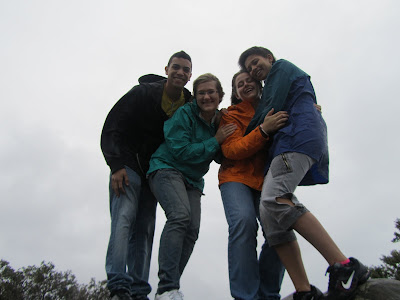
Day 12
What did we do today?
Today we took a bus to the airport in Cairns. Then we got on our plane to Sydney. We took a bus to get to or terminal at the airport in Sydney, and then we got on our plane to Los Angeles. From LAX we took a flight to Chicago. From there we got a bus and finally made it home. Even though this whole ordeal was well over 24 hours long, we arrived in Chicago only about 6 hours after we left Cairns. It’s been a long day. We’re home!
INQUIRY: Are small or big fish more likely to stay close to the surface of the water?
Hypothesis: If fish are observed in different locations around the Great Barrier R
What are we observing? The amount of small and large fish in a particular area within 6 feet of the water’s surface.
Equipment: One will need snorkel gear, and underwater viewing station, and a timer.
Procedure: (1) Observe fish from a snorkeler’s perspective. (2)Record the number of fish that swim by within 6 feet of the water’s surface for one minute, making note if the fish is small or large. The fish is large if it is as big or bigger than a handbreadth. (3) Repeat steps 1 and 2 in the underwater viewing station.
Observations:
Trial 1 Area 1: Snorkeling
Number of small fish close to surface: 16
Number of large fish close to surface: 1
Trial 2 Area 2: Under Decks
Number of small fish close to surface: 3
Number of large fish close to surface: 10
Data Conclusion:
Total number of small fish close to surface: 19
Total number of large fish close to surface: 11
Conclusions:
Through the conduction of this experiment, my hypothesis was proven correct. There were more small fish close to the surface of the water than large fish. This is most likely because the bigger fish can reach deeper depths.
New Questions that have arisen as a result of this experiment:
How does the swim bladder of a fish affect its ability to dive?
What is the common depth for this species of fish?
Would the time of day affect the results?
Possible sources of error:
The data was taken in deeper water. If it had been taken closer to the reef area the results may have been different.
When the second trial was done, the handlers were feeding the fish. This could have forced the small fish down deeper to feed off of the bigger fishes’ scraps.
There was an unclear definition of depth and size in fish.
The same fish could have been counted twice.
How to Improve:
Add more observers to collect an average number of fish.
Watch the fish in a variety of locations.
Conduct experiment in different months and different times of day.























